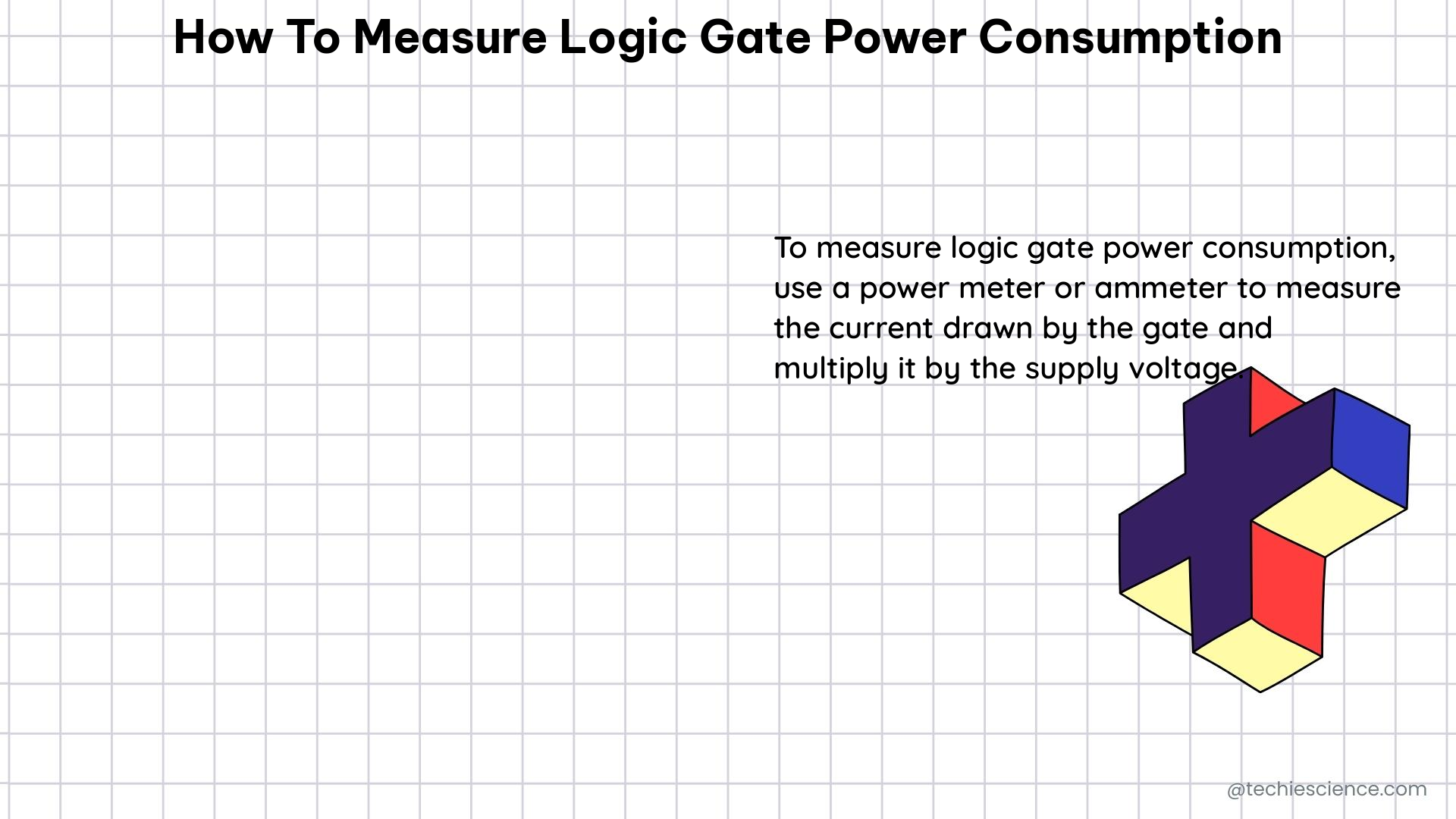Summary
Measuring the power consumption of logic gates is crucial for optimizing the energy efficiency of electronic circuits. This comprehensive guide delves into the intricacies of static and dynamic power consumption, providing a step-by-step approach to accurately quantifying the power requirements of logic gates. From calculating the power-dissipation capacitance to leveraging advanced measurement techniques, this article equips you with the knowledge and tools necessary to become a proficient power consumption analyst.
Understanding Static and Dynamic Power Consumption

The power consumption of a logic gate can be divided into two main categories: static power consumption and dynamic power consumption.
Static Power Consumption
Static power consumption occurs when the logic gate is in a steady state, with one of the transistors in the CMOS inverter being turned on. This results in a small, continuous current flow, which can be calculated using the following formula:
P_static = I_static * V_dd
where I_static is the static current and V_dd is the supply voltage.
The static current I_static is typically in the range of nanoamperes (nA) to microamperes (μA) for modern CMOS logic gates, depending on the technology node and design parameters.
Dynamic Power Consumption
Dynamic power consumption, on the other hand, occurs during switching transitions when both the NMOS and PMOS transistors in the CMOS inverter are temporarily turned on, causing a large current flow. This dynamic power consumption can be calculated using the following formula:
P_dynamic = 0.5 * C_pd * V_dd^2 * f
where C_pd is the power-dissipation capacitance, V_dd is the supply voltage, and f is the switching frequency.
The power-dissipation capacitance C_pd is a crucial parameter in calculating dynamic power consumption, as it represents the capacitance that must be charged or discharged during a switching transition. C_pd can be calculated using the following equation:
C_pd = C_gate + C_wire + C_load
where C_gate is the gate capacitance, C_wire is the interconnect capacitance, and C_load is the load capacitance.
Measuring Power Consumption
To measure the power consumption of a logic gate, you can use either a power analyzer or a digital multimeter.
Power Analyzer
A power analyzer is a specialized instrument that can measure the voltage and current waveforms of the logic gate and calculate the power consumption. Power analyzers typically provide detailed information about the static and dynamic power consumption, as well as other relevant parameters such as power factor and harmonic distortion.
When using a power analyzer, it’s important to consider the following factors:
- Input Voltage Level: The input voltage level can significantly affect the power consumption of the logic gate. Ensure that the input voltage matches the design specifications.
- Input Rise Time: The input rise time, which is the time it takes for the input signal to transition from a low to a high level, can also impact the power consumption. Faster rise times generally result in higher dynamic power consumption.
- Power-Dissipation Capacitance: As mentioned earlier, the power-dissipation capacitance
C_pdis a crucial parameter in calculating dynamic power consumption. Ensure that the power analyzer accurately measures or accounts for this parameter. - Output Loading: The load connected to the output of the logic gate can affect its power consumption. The power analyzer should be configured to measure the power consumption under the appropriate output loading conditions.
Digital Multimeter
Alternatively, you can use a digital multimeter to measure the power consumption of a logic gate. Digital multimeters can directly measure the average power consumption by taking the product of the voltage and current readings.
When using a digital multimeter, consider the following:
- Voltage Measurement: Ensure that the multimeter is connected to the correct voltage supply terminals of the logic gate.
- Current Measurement: The multimeter should be connected in series with the logic gate to measure the current accurately.
- Averaging Time: Set the multimeter to take an appropriate averaging time to obtain a stable and representative power consumption reading.
Advanced Measurement Techniques
For more detailed power consumption analysis, you can employ advanced measurement techniques, such as:
- Transient Current Measurement: Using a high-bandwidth current probe or a low-value series resistor, you can measure the transient current waveforms during switching transitions to better understand the dynamic power consumption.
- Thermal Imaging: Thermal imaging cameras can provide valuable insights into the power dissipation of individual logic gates within a circuit, helping to identify hot spots and optimize the design.
- Simulation-Based Analysis: Utilizing circuit simulation tools, you can model the logic gate and its surrounding circuitry to predict the power consumption under various operating conditions, allowing for design optimization before fabrication.
Conclusion
Measuring the power consumption of logic gates is a crucial step in designing energy-efficient electronic circuits. By understanding the principles of static and dynamic power consumption, and leveraging advanced measurement techniques, you can optimize the power performance of your logic gates and ensure the overall efficiency of your electronic systems.
References
- “CMOS Power Consumption and CPD Calculation,” Texas Instruments, https://www.ti.com.cn/cn/lit/an/scaa035b/scaa035b.pdf?ts=1705288558620
- “Measurement of current variations for the estimation of software-related power consumption,” ResearchGate, https://www.researchgate.net/publication/3090612_Measurement_of_current_variations_for_the_estimation_of_software-related_power_consumption
- “CMOS AND Circuit calculate power consumption,” Electronics Stack Exchange, https://electronics.stackexchange.com/questions/565022/cmos-and-circuit-calculate-power-consumption
- “Power Measurement Techniques for CMOS VLSI Circuits,” IEEE Xplore, https://ieeexplore.ieee.org/document/1270858
- “Thermal Imaging for Power Consumption Analysis in Integrated Circuits,” IEEE Xplore, https://ieeexplore.ieee.org/document/6174898

The lambdageeks.com Core SME Team is a group of experienced subject matter experts from diverse scientific and technical fields including Physics, Chemistry, Technology,Electronics & Electrical Engineering, Automotive, Mechanical Engineering. Our team collaborates to create high-quality, well-researched articles on a wide range of science and technology topics for the lambdageeks.com website.
All Our Senior SME are having more than 7 Years of experience in the respective fields . They are either Working Industry Professionals or assocaited With different Universities. Refer Our Authors Page to get to know About our Core SMEs.